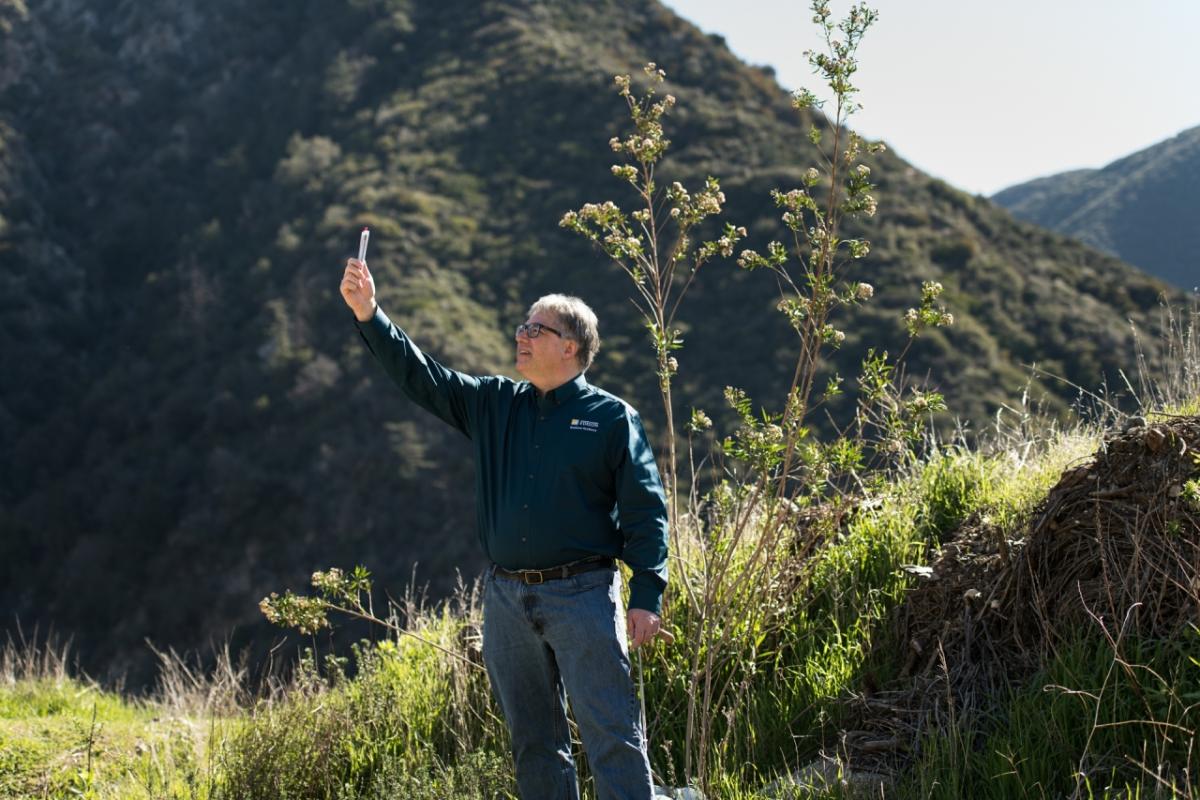Fire Meteorologist Helps Lead SCE’s Wildfire Prevention Efforts
The fire scientist is the first-ever at the utility and will use data and algorithms to help fight California’s wildfires. by Reggie Kumar

Not everyone who fights wildfires is a firefighter. Some, like Tom Rolinski, fight fires with algorithms and weather modeling data. On a typical day, you can find Southern California Edison’s “wildfire whisperer” behind a computer screen using high-tech software to help prevent the next big wildfire.
“I’m excited about my new role since SCE’s priority is to keep customers and communities safe,” said Rolinski, 52, a graduate of Saint Louis University with a degree in meteorology. “I will continue to help the company minimize the wildfire threat across the service territory by implementing more sophisticated technology to forecast the potential wildfire threat.”
Rolinski’s passion for meteorology started at a young age in southern Indiana, where he made weather instruments and wrote his own weather forecasts. By age 11, after experiencing snowstorms, severe thunderstorms and even tornadoes, Rolinski admits he was hooked.
“I would run home during lunch hour, just to check on the weather conditions and then run back to school,” he said. “While everybody was outside playing football, I rushed home to write a weather forecast. I was definitely a weather geek.”
Rolinski co-developed the Santa Ana Wildfire Threat Index, a predictive model that helps fire agencies and the public determine the wildfire threat during a high-wind event. “It’s been featured on the Weather Channel and used by fire agencies and the general public to help keep Southern California safe during a Santa Ana wind event,” he said.
Rolinski is the first-ever “fire scientist” at SCE. He started his career at the National Weather Service and eventually became a certified incident meteorologist. The role allowed him to strictly focus on wildfire prediction. He has also worked at the U.S. Department of the Interior Bureau of Land Management and the U.S. Forest Service.
Rolinski’s wildfire prediction process involves analyzing fuel moisture from wet and dry brush to accurately make a wildfire prediction. He says the company’s current and past wildfire mitigation efforts — specifically its 2019 Wildfire Mitigation Plan — have exceeded his expectations.
“SCE has four other meteorologists that operate cutting-edge weather technology that was in place before I got here, and it forecasts fire conditions down to a third of a mile,” he said.
“With the addition of the supercomputers and fuel sampling program that I’m creating, SCE will be well-positioned to effectively predict the wildfire threat in state-designated high fire risk areas.”
For more information about STEM careers at SCE: edisoncareers.com.

